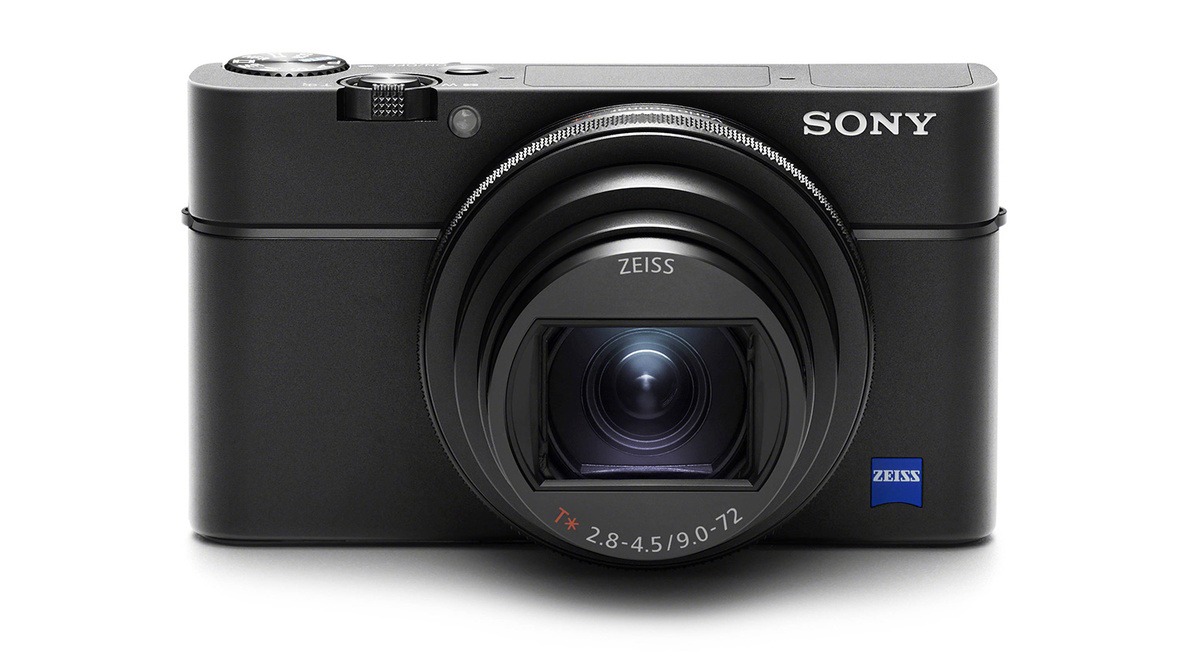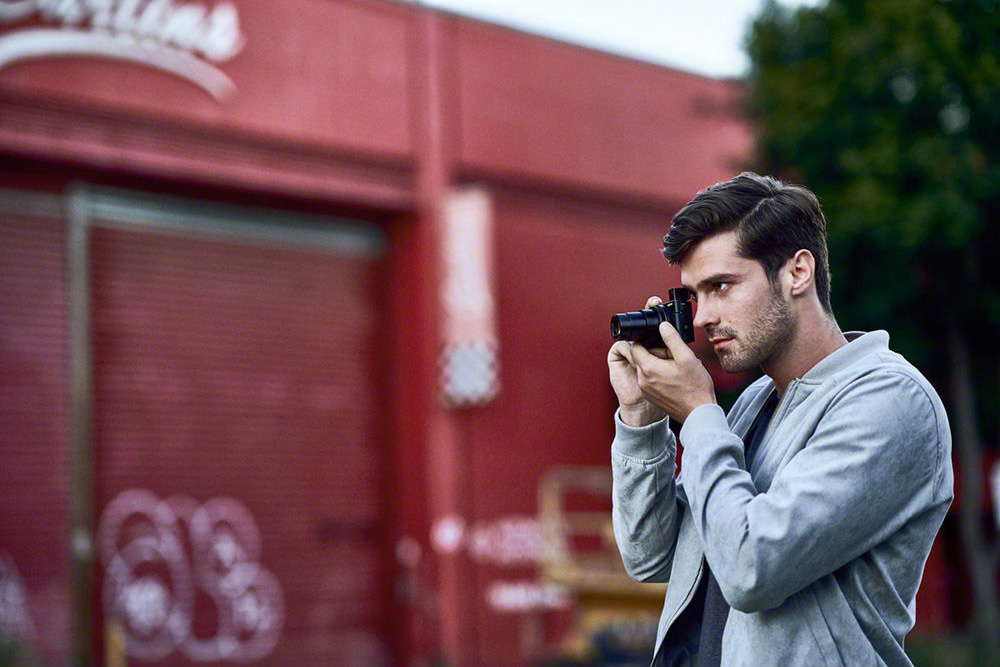Last week, Sony unveiled their latest compact camera. Now here’s the clickbait: 24-200mm f/2.8-4.5 Zeiss lens, 24 fps continuous shooting while utilizing its 315-point hybrid autofocus, added touchscreen, Sony a9-inherited Eye AF and face detection algorithms, and 4K video recording. Let’s take a look at the new RX100 VI.
First, let me quickly introduce some of the main camera specs. The Sony RX100 VI features a 1-inch, 20.1-megapixel Exmor RS BSI sensor. It uses a BIONZ X image processor and front-end LSI chip. The Zeiss Vario-Sonnar lens with T* coating optically zooms from an equivalent 24mm to 200mm with a variable aperture of f/2.8-4.5. Video can be shot in 4K30p, and HFR (high frame rate) Mode can do up to 960 fps in 1080p. It has a base ISO of 125 and goes up to 12,800.
As a compact camera, portability is obviously one of its big draws. The RX100 series has always been the typical pocket-friendly design that easily can be palmed in the hand. The RX100 VI measures 4.0 x 2.3 x 1.7 inches and weighs 10.62 ounces. The difference between the Mark V and Mark VI is a matter of a couple extra millimeters in depth and a couple added grams. I spent a few hours walking around Central Park in New York City with the RX100 VI and never in the back of my mind did I think that the camera was annoying to have to carry around; It’s small and light enough to where it kind of felt like it didn’t exist until I wanted to take a photo or video. This is in the same line as how we don’t even think about carrying our smartphones anymore, it’s just there when we need it.
When taking into account the photography-related differences of the RX100 V and RX100 VI, the ability for them to be of near-identical measurement is really something. The RX100 VI has now stretched its equivalent focal length all the way to 200mm. This opens up a lot more photographic opportunities that were just not possible to capture with the previous models. Fixed-lens cameras can be scary to photographers, well at least to me, because we’re locked into whatever lens the camera comes with. With the previous Mark V, I felt the 24-70mm of that camera to be too limiting, regardless if in real-world shooting I would actually use anything outside that; I just need the freedom of having the option. Using the Mark VI, the focal range was finally enough to calm those previous apprehensions I’ve had about fixed-lens cameras.
Life is full of compromises, though, and trading in a longer focal length has brought a slower aperture to the RX100 VI over the previous model. The focal length-aperture combination also does not match with what the Mark V was capable of. At the maximum 70mm on the Mark V, the widest aperture was f/2.8. On the Mark VI, when zoomed to 70mm the aperture is f/4. The issue of this can range from “doesn’t matter at all” to “why, Sony, why!” all depending on how the user plans to typically use the camera.
I have been assured, however, that while it’s easy to plainly see that the Mark V has a short focal length but larger aperture and the Mark VI has a longer focal length but smaller aperture, the true big story with the new model is its autofocusing system and how well it performs at those longer focal lengths.
Sony has taken what they learned with developing the sports-oriented, full-frame Sony a9 and have been trickling down that technology to all its camera releases since. In the RX100 VI, they’ve included the exact same processing system and algorithm as the Sony a9. This means there’s a dramatic improvements with the Eye AF tracking — as in two times as good as the Mark V — and improved face detection. The 0.03 s autofocusing speed is snappy in most conditions I faced, with some difficulty in darker, low contrast situations.
The RX100 VI now has a touchscreen LCD to control focus points, something I used far more here (if not exclusively) than I ever have with the Alpha-series cameras. If I had to guess, I’d say its because of the way you hold this compact camera. With gripped cameras my thumb hovers over the physical buttons and it’s easy to adjust the focus point that way, but with this compact camera my thumb is being used on the underside to hold onto it. The touchscreen was responsive to taps and dragging and the only thing holding it back is its lack of universal function. It takes a little trial and error to know what parts of the camera’s software understands touch and what needs input from the buttons instead.

Touchscreen LCD can flip up 180 degrees for selfies and downward 90 degrees. Photo courtesy of Sony.
On the topic of inputs, the RX100 VI has two dials to control two-thirds of the exposure triangle; one is the multi-function lens ring and the other is on the backside of the camera. If you’ve used Sony’s crop-sensor a6000 series you may be used to having only two dials to work with. The final control, if you’re in Manual mode, will require a button press to enter that function followed by a scroll of the wheel to change it. If you’re in Aperture-Priority or Shutter-Priority, the lens ring can automatically change functions to control either the aperture or shutter speed depending on the mode you’re in. Personally I dislike that as I’d rather have my camera controls always do the same thing. The problem here is that in the custom settings you can change the lens ring function to always adjust one of these instead of automatically switching, however you can’t customize the backside control wheel at all, making the entire thing kind of pointless to change. I would expect a firmware change to add in this customization option.
The physical lens ring itself could use some work as well. I found it to be cheap feeling and has an uneven stiffness while twisting rather than a solid glide I’m used to with many of Sony’s lenses. This is especially noticeable in manual focus mode when I’m trying to nail down the focus with precision.
Shooting video with the RX100 VI, while managing my expectations, was generally a good experience. Up front, the few things that can cause trouble are the SteadyShot image stabilization not being powerful enough at longer focal lengths, recording in 4K and HFR mode eating a battery in under an hour and giving me the ol’ temperature warning, and lack of external mic input. All three of these I do understand why it’s not easy for them to implement perfectly in a compact camera, but at the same time they put it there (or in the case of the microphone jack, didn’t put it there) so it’s fair game to criticize.
Below is a short sample video produced from footage shot in 4K30p and a variety of 1080p HFR modes. Standard exposure modes and color profiles were used, typical of an everyday non-professional.
Overall, the Sony RX100 VI appears to be a culmination of everything Sony has been focused on recently: updating their camera line with touchscreen LCDs, continuing to improve the autofocus system (with an emphasis on Eye AF), and maintaining high image quality through refined chips and circuitry. It’s not a replacement for the RX100 V — in fact you can still pick up any model of the RX100 series brand new — but it does stand out as being one of the best travel cameras today.
The Sony RX100 VI is priced at $1,198 and is available now for pre-order. The cameras will begin shipping to customers on July 10.






























how does it perform compared to the Canon 5D mark IV ?
I, personally, love my 1DX mark 2. And this is a small baby for...see my YouTube channel ;)